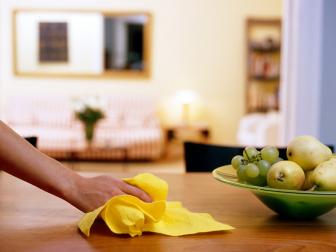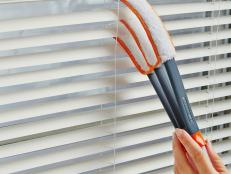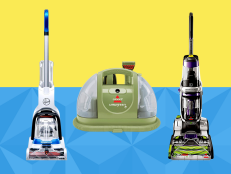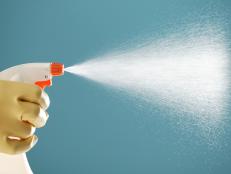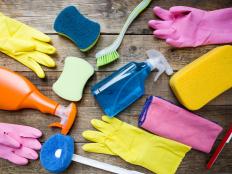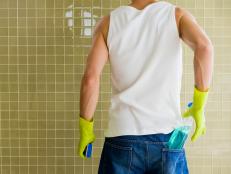7 Tips for Controlling House Dust Mites
These microscopic spider-like critters are a leading cause of allergies and asthma. Here's how to fight back.
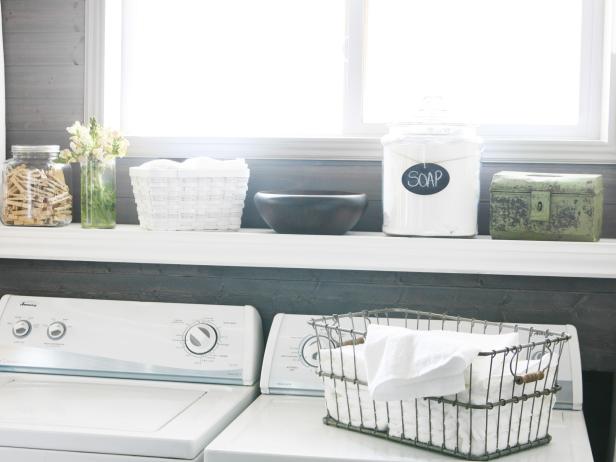
Not Another Housewife
Tip for reducing the numbers of dust mites in your home: Wash bedding weekly in hot water — above 130 degrees.
Found in nearly all homes, dust mites like warm, moist areas such as your bed. Experts estimate that up to 2,000 of these microscopic cousins to spiders and ticks can live in just one ounce of mattress dust. And that could mean a lot of sneezing and wheezing if you're sensitive to them. A protein found in their feces and decaying bodies makes dust mites one of the leading causes of allergies and asthma.
What Are Dust Mites?
Measuring only 0.5mm long as adults, you'll likely only be able to see a dust mite with a microscope. They feed primarly on dander (skin scales) shed by us and our pets. Dust mites do not bite but achieve nuisance status for the allergens in their their cast skins — or skin shells — fecal matter and secretions.
These tiny arthropods bear a resemblance to their cousins the tick but with round, creamy white and hairy bodies. They perfer warm environments with high humidity — areas of the home that are 75-80 degrees and with a relative humidty level of 70 percent to 80 percent.
What Are Dust Mite Allergy Symptoms?
Inhalation of dust mite allergens can cause such reactions as a stuffy or runny nose, sneezing, coughing and watery eyes. According to the University of Kentucky College of Agriculture, hypersensitve individuals may suffer from acute attacks of bronchial asthma accompanied by wheezing, shortness of breath and perhaps even death. Additionally, the University of Kentucky says tests and studies by allergists "have shown house dust mite to be the most common allergy in asthmatics and an important 'root cause' for the development of asthma in young children."
You can't eliminate these unwanted guests altogether, but you can take these steps to reduce their numbers.
How to Get Rid of Dust Mites
1. Use allergen-proof bedding. Encase your mattress and pillows in allergen-blocking covers. These covers prevent dust mites from taking over your bed. Put a vinyl cover on your box springs.
2. Wash bedding weekly in hot water above 130 degrees. Launder mattress pads, blankets and comforter covers at least once a month and more often if you suffer from allergies. If you can't wash in hot water, put the bedding in a hot dryer (at least 130 degrees) for 20 minutes, and then wash and dry as usual.
3. Deprive mites of moisture. Dust mites absorb and lose humidity through their skin. They're vulnerable to dehydration and struggle to survive when relative humidity is less than 50%. A dehumidifier and improved ventilation can help lower humidity levels in the home. Also, encase the vinyl mattress cover with a waterproof mattress pad. Cover the vinyl covers on pillows with zippered pillow covers.
4. Use a vacuum with a HEPA (high-efficiency particulate air) filter. Or simply buy vacuum bags made specifically for allergens.
The Best 9 Air Purifiers for 2022, Tested by HGTV Editors
Breathe deeper in your home by adding a top-rated air purifier that reduces dust, mold, pet dander, smoke and odor.
5. Consider installing HEPA filters in your home's central air conditioning and heating system. Portable air cleaners with HEPA filters can also be used, though these portable air cleaners might offer only marginal benefits if there is quality ventilation.
6. Buy washable stuffed toys. You can kill dust mites in stuffed animals by putting them in a plastic zipper bag and storing in the freezer overnight, but this cold treatment won't get rid of the allergens. Instead, buy only stuffed toys that you can wash regularly with the bedding.
7. Remove furnishings that accumulate dust. That would include removing carpeting, upholstered furniture and drapes. Replace wall-to-wall carpeting with area rugs. If carpeting is preferred, opt for low-pile varieties.







